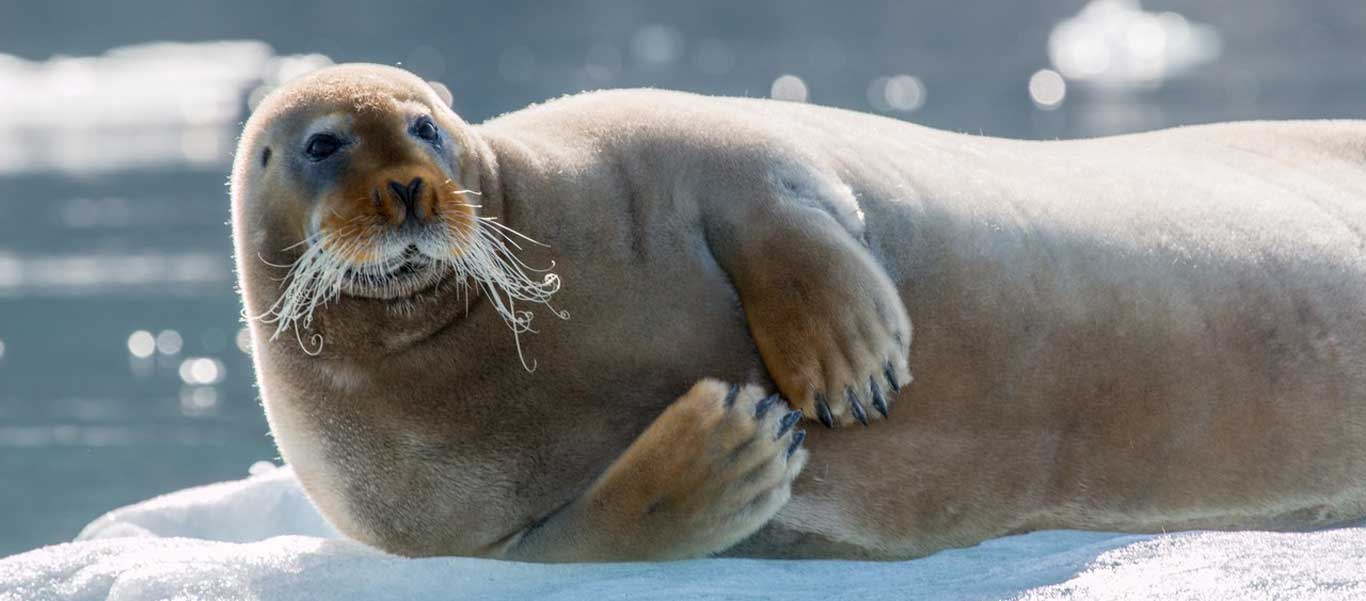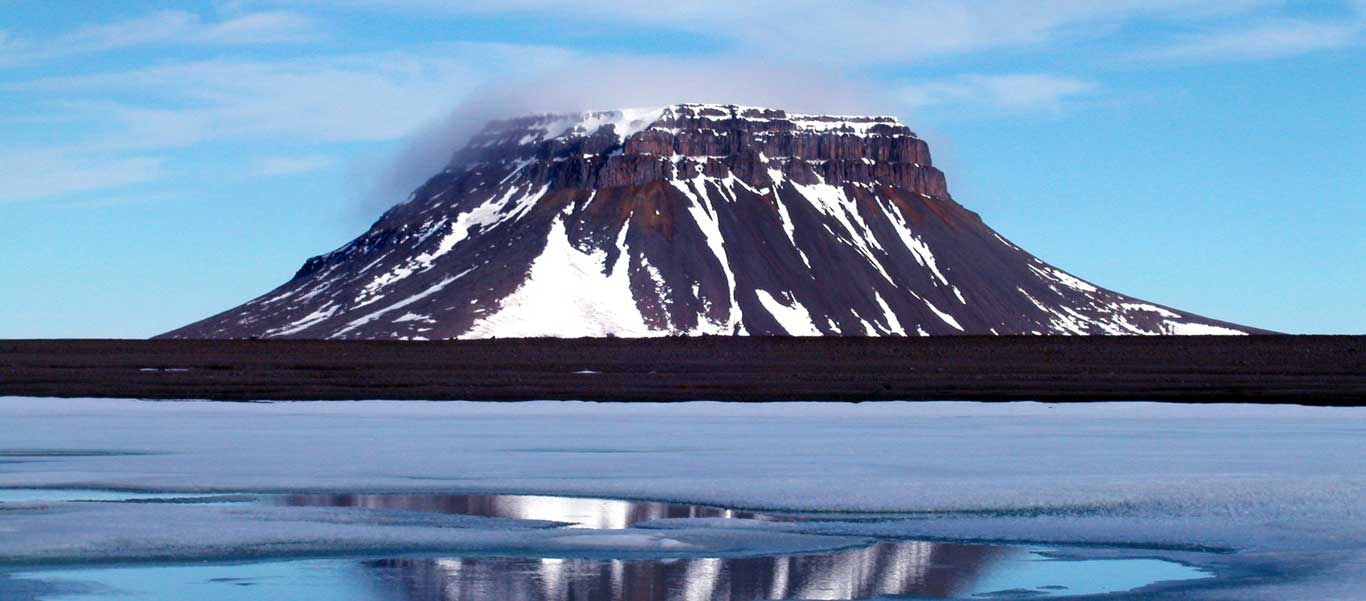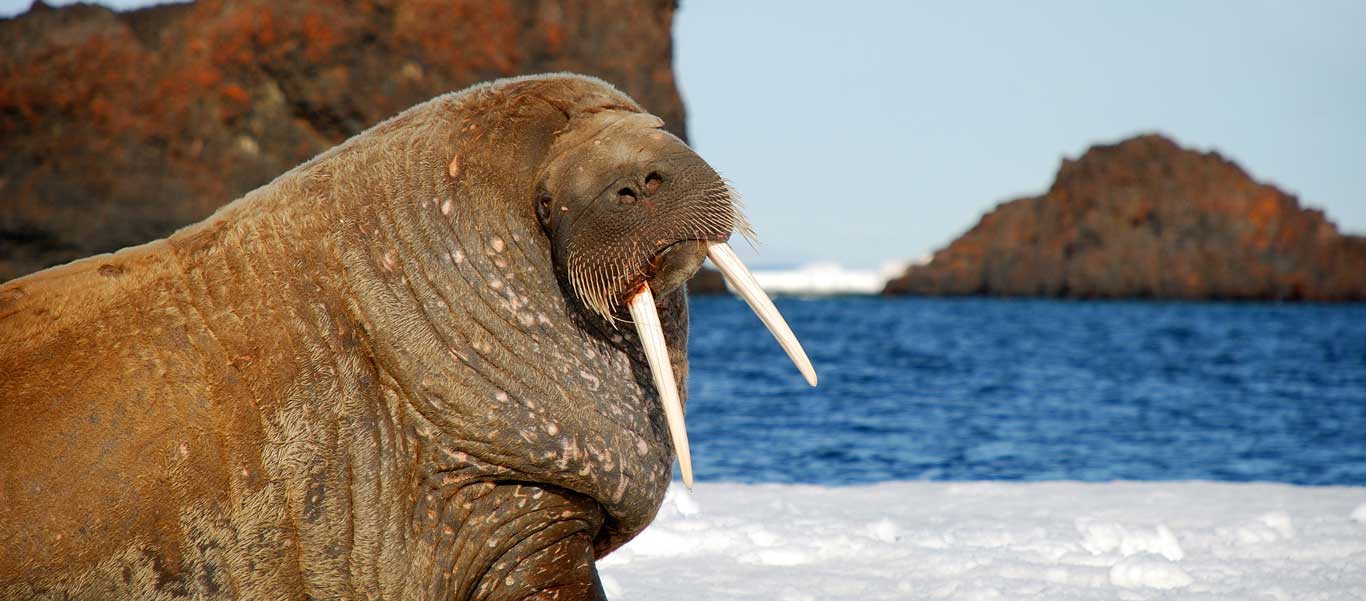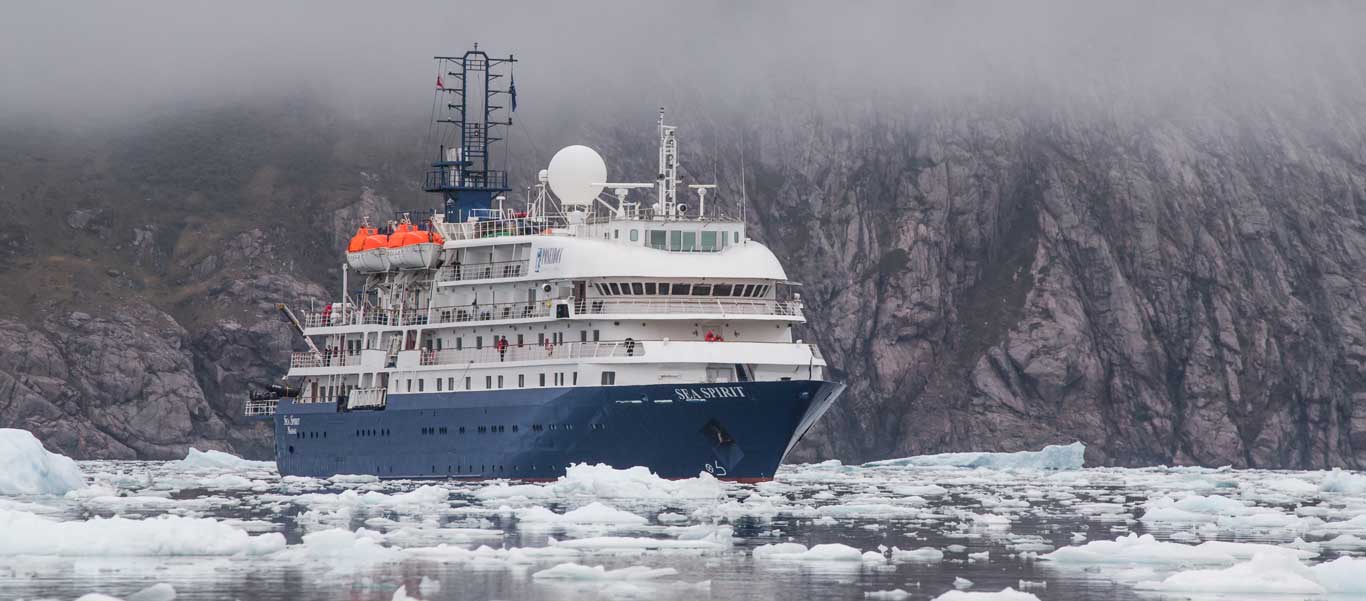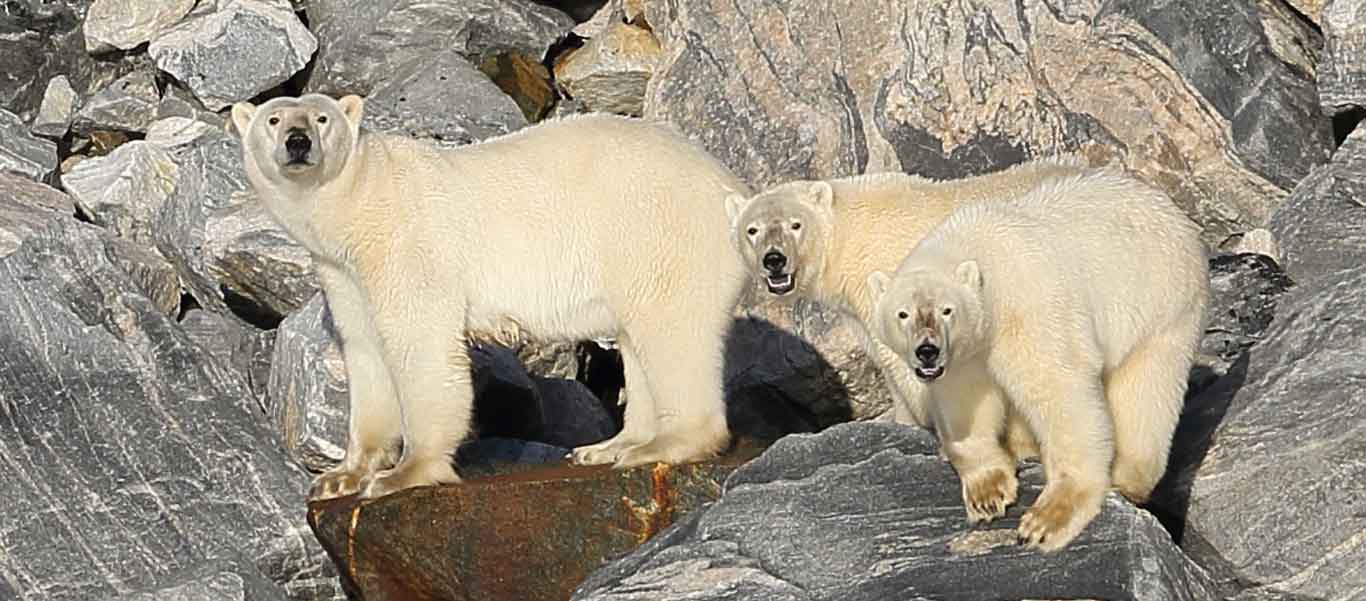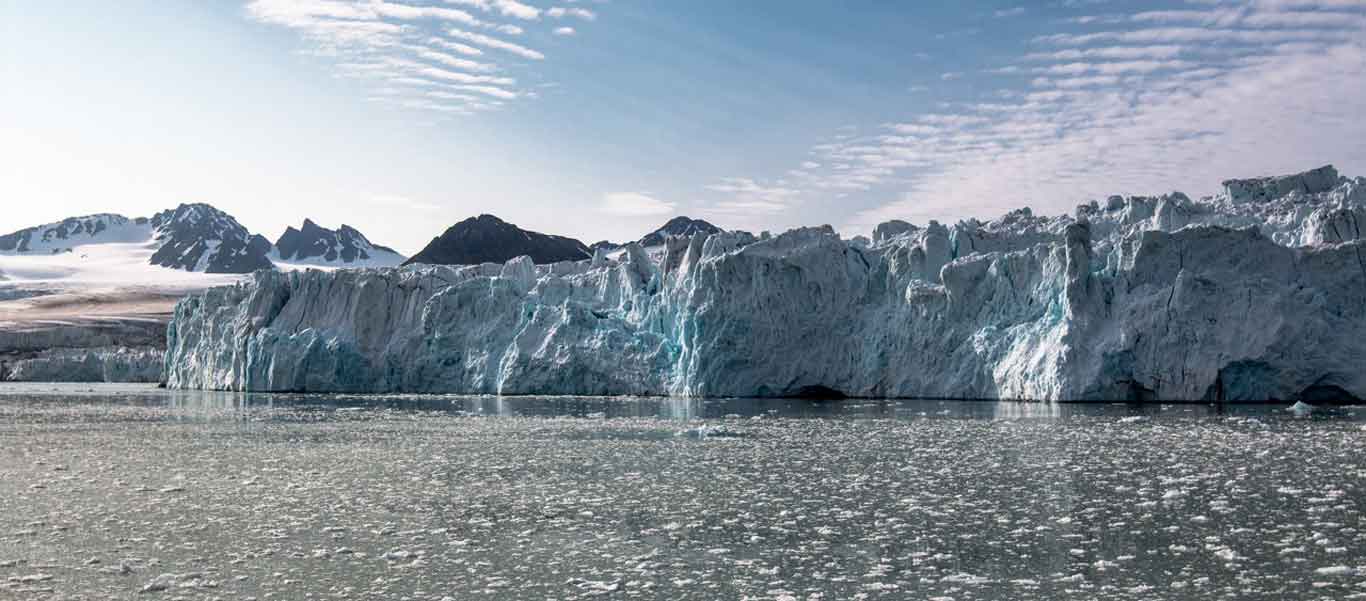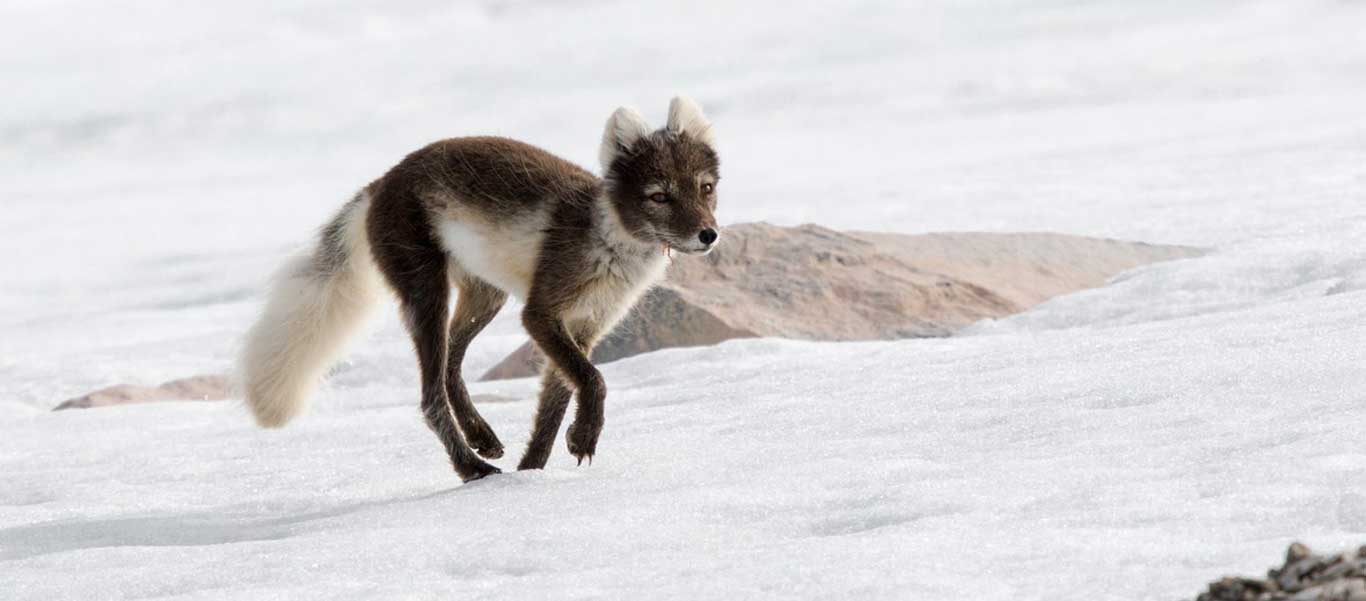Franz Josef Land
onboard Sea Spirit
Franz Josef Land & Svalbard Cruise
To visit Franz Josef Land, the most northerly land in the Eastern Hemisphere and part of the Russian Arctic National Park, is to overcome numerous obstacles set by man and nature alike. There are only a few weeks each summer when the sea ice breaks up enough for visitors to reach it, and even then, access is strictly controlled by Russia. As a result, this vast frozen archipelago is alive with wildlife, offering some of the best Polar Bear, Walrus and whale viewing on Earth. It also packs an historical punch, as it was the site of several 19th-century polar explorations. Join Apex aboard the intimate, ice-strengthened Sea Spirit to explore this blue shimmering world of icebergs, mosses and seabird-mobbed cliffs. Search for Polar Bears feasting, frolicking and caring for their young; Belugas and Narwhals among the ice floes; and Arctic Foxes as they hunt on the wildflower-specked tundra in this most wild and rarely-seen land.
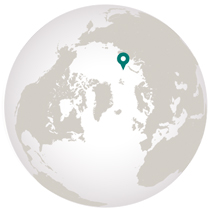
Destinations
- Travel by Air
- Travel by Road
- Travel by Boat
- Travel by Bullet Train
- Travel by Rail
- Travel by Dog Sled
-
Wednesday, July 4: Arrive Longyearbyen, Svalbard, Norway
Arrive in Longyearbyen, the administrative capital of Spitsbergen, the largest island in Norway’s Svalbard archipelago. The most northerly major town in the world, Longyearbyen is located about 350 miles north of mainland Norway. Once here, stretch your legs on a walk past the colorful shops and cafés of this former mining town before returning to the hotel for a welcome dinner with your fellow travelers and expedition team. Dinner and overnight at the Radisson Blu Hotel.
-
Thursday, July 5: Longyearbyen / Embark Sea Spirit
This morning, tour the town of Longyearbyen including the small, but fascinating, Svalbard Museum. Enjoy lunch and time to explore the charming town before heading to the harbor in the late afternoon to board the Sea Spirit, your home away from home for the next 13 nights. Be sure to be on deck as the ship slips its moorings and sails through Isfjorden, with staggering views of Alkhornet mountain and the rugged coastal plains, still illuminated during these long summer days.
-
Friday & Saturday, July 6 & 7: Across Barents Sea
Sail around the south of Svalbard and across the Barents Sea toward Russia and Franz Josef Land. Enjoy lectures on the major figures in Franz Josef Land’s rich history of exploration, as well as the remarkable array of bird and marine life that thrives on these mainly uninhabited and fiercely-protected islands. Spend time on deck with expert naturalists and watch for ice-dependent marine mammals. Whales present in the area include Minkes, Belugas, Humpbacks, and, less frequently, Bowheads and Narwhals. Bearded, Ringed and Harp Seals abound. And, of course, the king of the ice, the majestic Polar Bear, reigns on the surrounding floes.
-
Sunday–Saturday, July 8–14: Franz Josef Land
After an obligatory immigration stop at the Russian polar station Nagurskoye, we are free to explore the archipelago at our leisure for the next week. Weather and sea ice conditions will greatly determine our course. The Sea Spirit is small enough to fit in most waterways, and frequent Zodiac trips will offer the best chances to see Polar Bears, Walruses, reindeer and Arctic Fox. Scree slopes and cliffs around the islands host enormous nesting colonies of seabirds, including Brünnich’s and Black Guillemots, Northern Fulmars and Little Auks. Common Eiders, Purple Sandpiper, Arctic Skuas, Glaucous and Ivory Gulls, Arctic Terns and Snow Buntings nest on the flat tundra. The expedition team will take full advantage of the near 24-hour daylight to exploit every opportunity for wildlife viewing.
-
Sunday & Monday, July 15 & 16: Svalbard Cruising
After a thorough exploration of Franz Josef Land, cross back through the bountiful waters of the Barents Sea and along the coastal islands of the eastern Svalbard archipelago. Though less numerous than in Franz Josef Land, Walruses are beginning to re-colonize here, after being hunted nearly to extinction in the area. Set out on Zodiac excursions for a closer look at them, as well as bears and seals, weather permitting. Take the opportunity to enjoy a few last onboard lectures as well.
-
Tuesday, July 17: West Spitsbergen
Take one last day to explore the spectacular fjords and coasts of western Svalbard. This area contains some of the archipelago’s most impressive scenery, with deep channels flanked by impossibly jagged peaks. Immense tidewater glaciers constantly calve icebergs. Fields of flowering tundra attract grazing reindeer and Arctic Fox. The whole area is alive with migratory birds. Among the historic sights are remnants of whaling camps, coal-mining operations, trappers’ cabins and the ruins of a WWII weather station.
-
Wednesday, July 18: Disembark in Longyearbyen / Oslo
Today, disembark the Sea Spirit in Longyearbyen and transfer to the airport for the flight to Oslo. Enjoy a farewell dinner and overnight at Oslo’s Radisson SAS Airport Hotel.
-
Thursday, July 19: Depart Oslo
After breakfast, a short walk takes you back to the airport for your international flights home.

